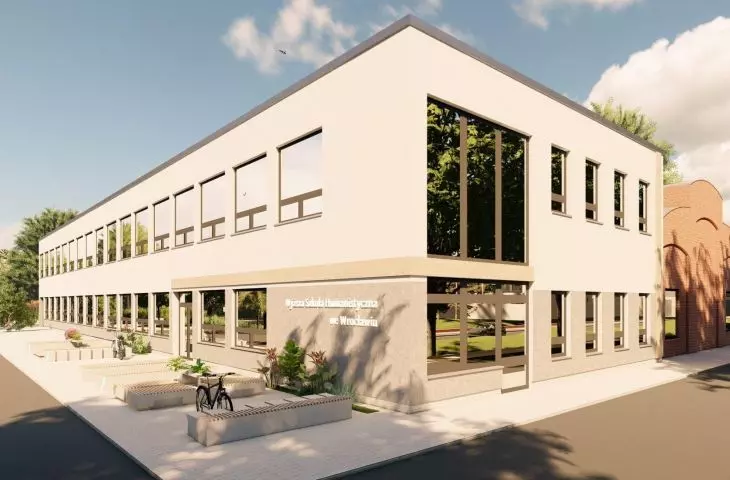From the College of Humanities in Wroclaw, {tag:studenci} proposed an original concept for the development of selected spaces of the WSH, located at 70b Robotnicza Street. The project, aimed at refreshing the university's image, was not limited to aesthetic changes - Furmanowicz invited the academic community to collaborate. Male and female students, as well as those working at the university, had the opportunity to express their opinions in specially prepared surveys, which helped tailor the final visual concept of the interior to the needs of male and female users.
outdoor zone
© Joanna Furmanowicz
harmony of styles and inspiration from nature
The interior design is based on a skillful combination of three styles: Scandinavian functionality and simplicity, a minimalist approach to form and the wabi-sabi philosophy, accepting imperfections and appreciating natural beauty. The central source of inspiration for the project was nature, particularly the nature of the Slovinski National Park. Organic shapes and decorative elements, as well as a subdued color scheme, gave the interiors harmony and tranquility.
lobby
© Joanna Furmanowicz
Furmanowicz relied on natural materials, such as wood, stone, cork and linen, warming the spaces and emphasizing their ecological character. The dominant color palette is shades of broken white, beige and light gray, which allowed to achieve the effect of a spacious, light-filled interior while maintaining a subtle elegance.
rectorate
© Joanna Furmanowicz
dean's office
© Joanna Furmanowicz
The scope of work includes selected rooms of the first floor of the building: entrance area with checkroom, dean's office, rector's office, relaxation area, social room, lecture hall, painting studio, sculpture studio and toilet riser.
lecture room
© Joanna Furmanowicz
modern technologies and finishing details
The interiors have been equipped with modern lighting systems that not only serve a practical function, but also play a decorative role. Minimalist light fixtures with geometric shapes and those inspired by the Japanese style blend with the aesthetics of the entire interior. In addition, a variety of vegetation placed in selected places brings life to the space, breaking the austerity of minimalist forms.
painting studio
© Joanna Furmanowicz
Furmanowicz also took care of finishing details, such as uniform microcement floors and porcelain stoneware tiles in high-traffic areas. In the art rooms, terrazzo tiles were used, with their texture reminiscent of paint stains, which fits in with the creative atmosphere of the painting studio.
sculpture studio
© Joanna Furmanowicz
an environment conducive to creativity
Furmanowicz' s project was not limited to the interiors - the facade of the building and its surroundings were also modernized. The author was keen to create a friendly outdoor space, conduciveto leisure activities andencouraging new visitors and guests to the university. The facade, like the interiors, refers to natural forms and materials, harmoniously interacting with the surrounding landscape. The creation of a relaxation zone and an outdoor event space allows the university to act as an open place of creativity and inspiration, accessible to the general public.
relaxation zone
© Joanna Furmanowicz
social room
© Joanna Furmanowicz
restroom
© Joanna Furmanowicz







































































